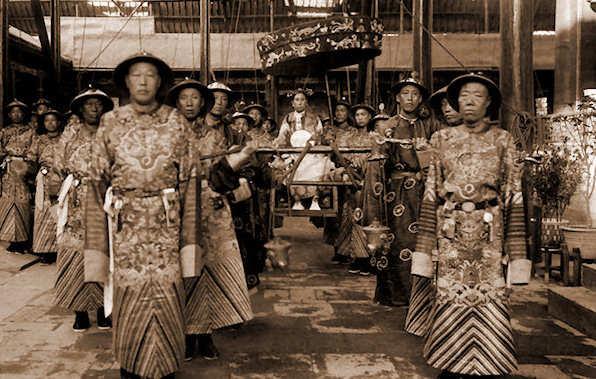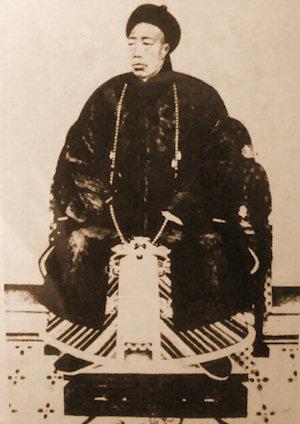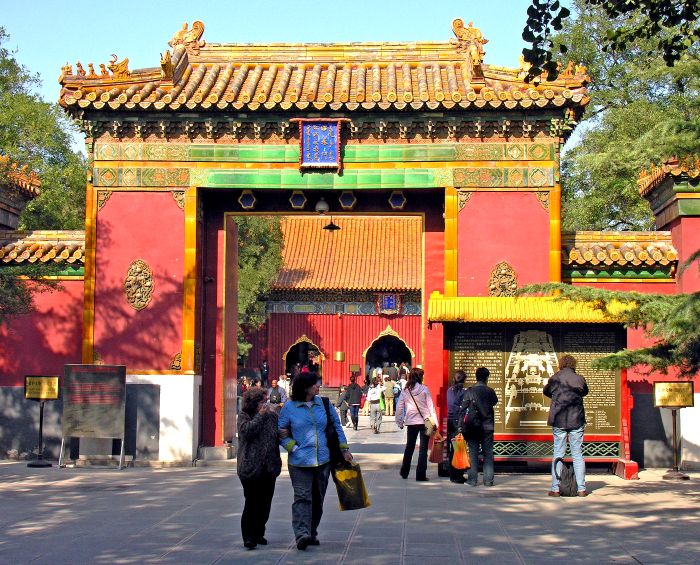Imperial Eunuchs 宦 huàn

There has been a very long history of eunuchs in China indeed eunuchs became influential at court as early as the Shang dynasty over three thousand years ago. Originally castration was carried out as a punishment as in the famous case of the great historian Sima Qian in 96BCE. Eunuchs could not father children they were trusted servants compared to the relatives of the emperor and empress who often conspired to elevate their children to positions of power. Because an Emperor had to marry outside his family the empress's power lasted only as long as her husband the Emperor. This abrupt end to a family's pre-eminence led to many brutal conflicts. In the Han dynasty the more impartial power of eunuchs balanced the struggles between the family of the Empress and the family of the bride of the young heir apparent.
Growing influence of Eunuchs
The power of eunuchs continued to grow during the Han dynasty, they were appointed to high administrative positions and controlled all Imperial appointments. As they attended the emperor from his birth and as he rarely left the palace they were the only means to reach the emperor. It was the tight control of access that gave them an immense source of income; a bribe of gold to the appropriate officials was needed to gain the emperor's ear. They received only a basic subsistence salary but also took a portion of all the goods passing through their often sticky hands. Even low grade eunuchs would expect a proportion of food carried into the Forbidden City by farmers. They were seen as the emperor's personal servants and often at odds with the officials and nobles who sought an audience with the emperor. Not only the emperor had the use of eunuchs, senior members of the Imperial family would also have a smaller number of such servants. At times the eunuchs formed a secret police force, spying on potential rivals to the throne and also threats to their own power. Although unable to father children, they were allowed to adopt, and this became a powerful form of patronage. Rich eunuchs would buy a house outside the palace in Beijing that they could use as long as they were back in the Forbidden City by sunset. Their external house (sometimes also used as a temple) would be where ordinary people would try and bribe their way to gain access to the Imperial court locked inside the City. The eunuch Wang Zhen who was executed for giving poor advice had a grand mansion that became the Zhihua Temple ➚ on his death in 1449, the Buddhist temple is one of the few that can still be visited.
The attraction of becoming a eunuch was the potential great wealth that could be attained, for example Liu Jin ➚ after only 4 years in office had accumulated 15 million pounds of gold in 1510CE. The admiral and explorer Zheng He is perhaps the most famous and best regarded eunuch (he was also a Muslim). Another highly respected eunuch was Tian Yi ➚ [1534-1605] who faithfully and unselfishly served three Ming emperors and was awarded a special honor of a grave at the Ming tombs.
The eunuchs were organized into a strict hierarchy, there were twelve departments: utensils; store houses; clothing; food; ceremonial equipment; music; calligraphy and ceremonial support. It was this last department that had the most power as it advised the emperor on what should be done and when based on ancient precedent. An audience could easily be canceled if the department advised that it would be inauspicious on that day. The director of this division was the chief eunuch and the emperor's right hand man.

On the Sui dynasty's re-unification of China, the eunuchs rose to power again, but never to the same level as during the Han dynasty. There was a brief resurgence under the later Tang emperors particularly Emperor Wenzong where the number of eunuchs reached 5,000, but the following Emperors limited their power to act as functionaries rather than power brokers. In the later Tang centralized control was weakening and the real power was with provincial governors. It was mainly during the Song that some eunuchs took to activities such as Liú Chéngguī (951-1016) who standardized weights and measures; Jiǎ Xiàn (1010-70) a pioneering mathematician and Tóng Guàn (1054-1126) a military general and adviser. There was another resurgence under the Ming dynasty, where the Forbidden City in Beijing became their enclave, at one time it has been estimated that there were at least 70,000 eunuchs. To curb their increasing power Ming Emperor Hongwu banned them from politics.

Power of Eunuchs in China
The first example from history of a eunuch rising to such power that he controlled the fate of the dynasty was Zhao Gao (d. 207BCE) who conspired with Li Si to control the succession after the death of the first Qin emperor. One of the most powerful and corrupt eunuchs was Wang Zhen ➚ (d.1449) who effectively ruled the Empire during the regency of Ming Emperor Zhengtong ➚ and it was he that led the disastrous northern campaign to subjugate Mongolia. The eunuch Wei Zhongxian ➚ (1568-1627) is considered the most notorious, the most powerful and villainous. He grew to have a power rivaling the emperor and was expected to found his own dynasty by the adoption of his nephew into the imperial family. It was the weak Ming Emperor Tianqi ➚ who gave him such power; choosing to spend his time on carpentry instead of administration. Wei aided by Madam Ke ➚ are often blamed for the final collapse of the illustrious Ming dynasty.
In the following Qing dynasty the great Emperor Kangxi reduced the number of eunuchs to 800 and curtailed their power - he no longer used them to reply to petitions destined for the emperor - he replied himself. Emperor Shunzhi was keen not to repeat the mistakes of the Ming dynasty and had a tablet prominently displayed warning of the perils of eunuch power. Dowager Empress Cixi despaired about the power of eunuchs calling them ‘rats and foxes’; ‘fawning sycophants’ and ‘artful minions’. However this did not prevent her forming close alliances (some say sexual relationships) with 安德海 Ān Dé hǎi (1844-1869) and 李莲英 Lǐ Lián yīng (1844-1911) who rose to great power. The eunuchs and the Imperial administration became so powerful that they blocked all attempts at reform that would jeopardize their influence and income. During the late Qing dynasty their numbers had gone into decline and the Last Emperor Puyi in the early years had less than 1,000 eunuchs in attendance and this dwindled to a handful when he was finally deposed in 1945. The fate of the sacked eunuchs was not good - many had to beg or seek refuge in Buddhist temples. The last eunuch 孙耀庭 Sūn yào tíng ➚ [1902-1996] was castrated a year after the foundation of the Republic and only served eight years at the palace and never saw the power and prosperity of the Imperial court. In his later years he became an expert on the Forbidden Palace and was the subject of a popular book by Sun Yaoting 'The last eunuch of China ➚'.
